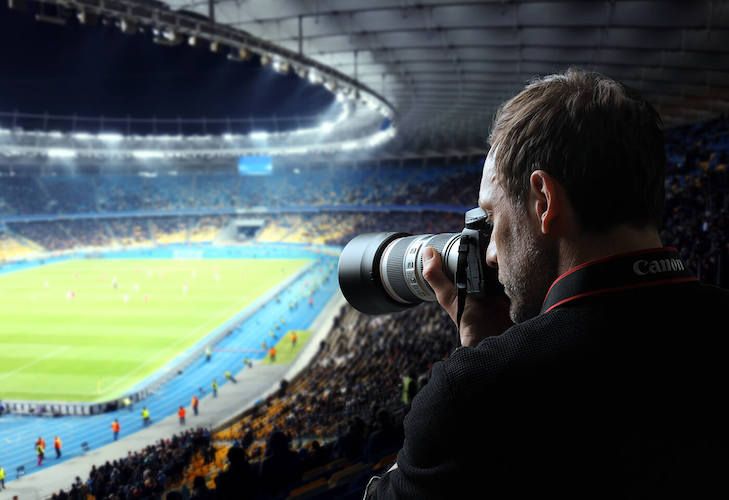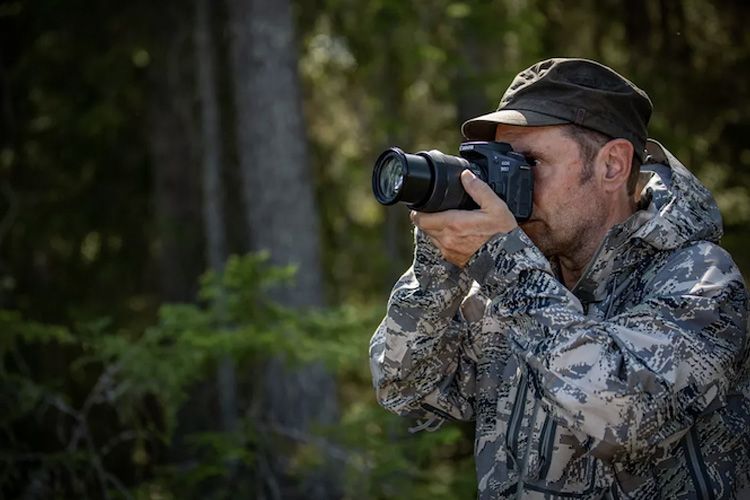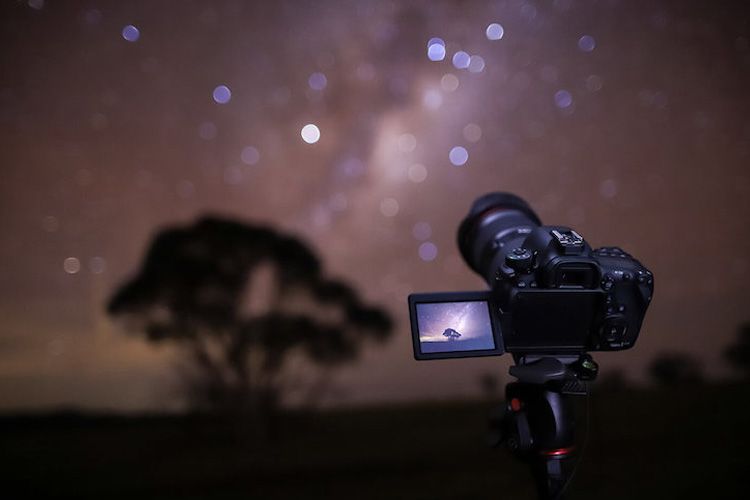
Keen to master your photography in 2023? Or perhaps you’re looking to move from your smartphone to a DSLR camera for your stills and videos. Whatever your photographic motivation, ignite your desires and creative senses with Canon’s range of DSLR cameras.
Why DSLRs
For a long time, photographers have encouraged the use of DSLR cameras since they typically feature powerful performance compared to smartphone cameras, and so deliver more impressive results. A DSLR camera is designed with professional photography and videography in mind, which means that it provides greater control over settings such as focus and exposure, as well as having the ability to be used with interchangeable lenses to achieve a range of different photography results, from portraits to landscapes and telephoto (zoom) photography.
Whether you’re shopping for your first DSLR camera or looking to make an upgrade, Canon’s DSLR Cameras have been equipped to deliver an easy and enjoyable photography experience. In this blog, we’ll showcase and compare two high-performing Canon DLSR cameras: the Canon EOS 90D and Canon EOS 6D Mark II. Through our comparison, we’ll touch up on all the essentials features and functions to help you find out if these Canon DSLR Cameras are the right one for you.
The Canon cameras at a glance…
Both cameras are DSLR cameras, with the Canon EOS 6D Mark II released in June of 2017, meanwhile the Canon EOS 90D was brought into market two years later in August 2019.
The standout difference between the two cameras are their sensor composition and the effective megapixels of the cameras. The Canon EOS 6D Mark II camera boasts a Full Frame CMOS sensor while the Canon EOS 90D is powered by a smaller APS-C CMOS sensor.
EOS 6D Mark II (left) vs EOS 90D (right)
Full Frame CMOS vs APS-C CMOS sensors
APS-C sensors are smaller in size, compared to full-frame sensors. An APS-C sensor typically measures 22.2 x 14.8mm while a full-frame sensor measures 36 x 24mm.
Aside from its size difference, the smaller APS-C sensor captures a smaller section of the scene when compared to full-frame sensors. Essentially, the same scene shot with both cameras will result in different images. A camera with an APS-C CMOS sensor will have more of the scene filled (with a crop, zoomed in feel) whereas the image captured by the full-frame camera will depict more of the overall landscape even though it’s the same scene.
Full Frame CMOS (left) vs APS-C CMOS (right), Source: Canon
The Photography Experience
For any photography experience, from casual shooting, taking travel pics and capturing precious family moments on holidays or at a wedding, these Canon DSLR cameras are designed to deliver with its imaging performance:
Canon 6D Mark II
Sensor: Full Frame CMOS sensor
Megapixels: 26.2 megapixels
Frames Per Second (FPS): 6.5 frames per second shooting
Canon EOS 90D
Sensor: APS-C CMOS sensor
Megapixels: 32.5 megapixels
Frames Per Second (FPS): 10 frames per second shooting
EOS 6D Mark II (left) vs EOS 90D (right)
Don’t Miss a Moment
Regardless of your subject or creative visions, Canon’s DSLR cameras deliver with a range of functional and impressive features and functions.
Viewfinder: with up to 100% field of view coverage (in the EOS 90D) and 98% field of view coverage in the EOS 6D Mark II, you can quickly view more of the scene in front of you.
45-point AF: both cameras feature a 45-point cross type Auto Focus tracking which is perfect for pin-point focusing, and all points are individually selectable, giving you greater control as you follow your subject(s).
Low Light Performance: Capture clear images even as surrounding light gets dark with the camera’s impressive low light performance (ISO). The Canon EOS 6D Mark II features 40,000 ISO low light performance and the Canon EOS 90D lets you capture in the dark with its 25,600 ISO that is expandable to 51,200.
Versatile Angles: equipped with a 3” vari-angle LCD touch screen, both the Canon EOS 90D and Canon EOS 6D Mark II lets you take images and videos at any angle that suits you, with the screen easily moved so you can comfortably focus on your subject.
Canon App Compatible: both the Canon EOS 90D and Canon EOS 6D Mark II feature built-in Bluetooth and Wi-Fi. When out in the field, the cameras can be connected to your smart device via Bluetooth for easy sharing of footage to the Canon Camera Connect app. Enjoy faster transfer of images and videos with Wi-Fi connectivity when in studio.
EOS 6D Mark II (left) vs EOS 90D (right)
The Videography Experience
When you’re not taking photographs, record clear footage such as home videos, travel adventures and online content with the varied video recording options in both Canon DSLR cameras.
The Canon EOS 90D enables video recording in Full HD resolution with 120 frames per second, as well as 4K Ultra HD video recording with 30 frames per second. On the other hand, the Canon EOS 6D Mark II is capable of recording in Full HD, HD and for time lapse movies, 4K Ultra HD or FHD video recording can be enjoyed too.
Camera Construction
When it comes to photography, the shooting experience could last anywhere between a few hours to a whole day. Whether you’re shooting in studio or out on the field, the camera’s design and build will make a world of difference in how and when you can shoot.
Confidently shoot even as the weather changes with the water and dust resistant properties of the Canon EOS 90D DSLR Camera, which also only weighs 701g. In comparison, the Canon 6D Mark II DSLR camera doesn’t feature any water or dust resistant properties and it’s heavier than the EOS 90D, with a weight of 765g.
A Closer Look: EOS 90D vs EOS 6D Mark II
Compare essential specifications, features and functions of both Canon DSLR cameras below.
| Frames per second |
10 frames per second continuous shooting (with full auto focus tracking)
|
6.5 frames per second
|
| ISO |
25,600, expandable to 51,200
|
40,000
|
| Autofocus Types |
- Spot AF
- 1-Point AF
- Zone AF
- Large Zone AF
- Face Priority AF
- AI Focus
- One Shot
- AI Servo
- Movie Servo AF
- Continuous AF
- Eye Detection AF
|
- One-Shot AF
- AI Servo AF
- AI Focus AF
|
| Video Recording |
4K 30p and Full HD 120p
|
Full HD 60p, HD and for time-lapse movies 4K or FHD
|
| Screen Type |
3” vari-angle LCD touch screen with approx 1.04 million dots
|
3” vari-angle LCD touch screen with approx. 1.04 million dots
|
| Built-in Wi-Fi |
Yes
|
Yes
|
| GPS |
Yes
|
Yes
|
| Canon App Compatible |
Yes
|
Yes
|
| Storage Type |
SD, SDHC or SDXC (UHS-II) card
|
SD/SDHC*/SDXC* memory cards
*UHS-I cards compatible.
|
| Weather Sealing |
Water and dust resistant
|
–
|
| Weight (including battery pack & card) |
701g
|
765g
|
Canon Camera Comparison Verdict
The Canon EOS 6D Mark II DSLR Camera is a great camera for those looking to move their photography and content creation experience away from the smartphone. Photographers seeking to capture beautiful personal memories and build a portfolio of content will benefit from this camera. With its 26.2MP full frame sensor, ISO 40,000 low light performance, HD and Full HD video recording; the Canon EOS 6D Mark II DSLR camera is the ideal entry-level DSLR camera.
The Canon EOS 90D DSLR Camera on the other hand is perfectly suited for those already creating content and looking to advance their experience, with the goal of producing impressive results. Generally speaking, the EOS 90D features superior camera specs and functions, including more megapixels, more frames per second, greater video recording capability, and more autofocus types than the Canon EOS 6D Mark II.
Be inspired by Canon’s range of cameras and lenses to suit any photography or content creation goal. Click on the link below to view all things Canon.
VIEW CANON












